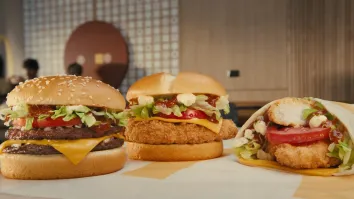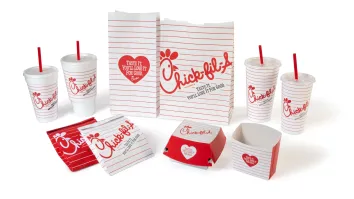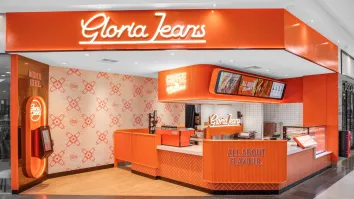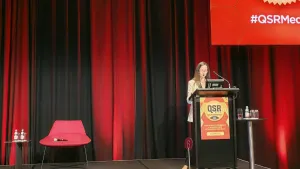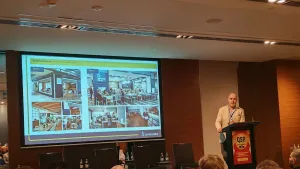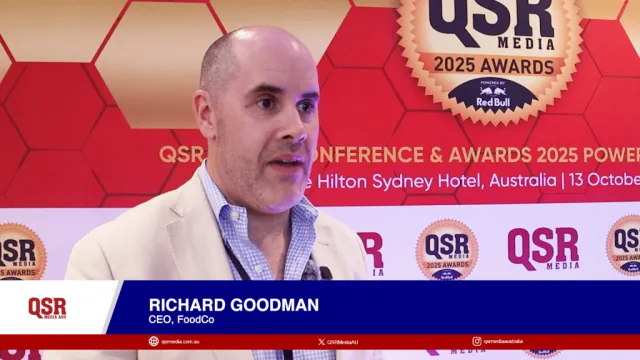
Domino's, Krispy Kreme and Nando's are charting their paths towards sustainable food innovation
Three of the country’s top product development leads talk to QSR Media about the latest trends and opportunities in their field.
Whether it’s a slice of pizza, a doughnut or a piece of chicken, consumers - more than ever - want to know how it was made, where it came from, raising various challenges and opportunities for the industry.
“The authenticity and origin of ingredients continues to be of increasing importance to our
consumers as they seek to make informed decisions about their food and purchasing choices. As a result, we are seeing a trend towards sourcing authentic flavours that meet consumer expectations,” Domino’s ANZ culinary innovation and development chef Michael Treacy explained to QSR Media in an exclusive interview.
Tracey is also seeing a trend towards ‘upcycling’: utilising technologies that work to reduce food waste and promote a more sustainable food supply chain.
Both, along with other trends he’s seeing, are said to be largely in response to expectations from consumers.
“[E]merging technology enables our business to become more sustainable. When it comes to our packaging, food production methods and raw materials, sustainability is and will continue to be a major focus for all brands,” he added.
Krispy Kreme ANZ product marketing manager Jasmin Clements expressed similar sentiments, also noting some inherent challenges.
“When approaching product development, consideration of your environmental impact is more important than ever, especially packaging and food waste,” she said in a separate interview.
However, both Treacy and Clements posed challenges in terms of sourcing.
“Extreme weather events across the globe, including the severe drought conditions we are facing here in Australia, are restricting both raw materials and food supply chains. We continue to work closely with our suppliers to find innovative solutions and deliver products at the price point customers expect,” Treacy said.
“Sourcing clean ingredients locally in Australia, at a reasonable price is challenging. Also, creating a circular economy with food and packaging is difficult in Australia right now,” Clements added.
Despite demand for more indulgent treats, “hidden delights” and brand collaborations, Clements also observed the use of ‘cleaner’ ingredients - a “large majority” of sweet treats being developed with no artificial colours or flavours - and more “better-for-you” options such as sugar-free, high-protein, paleo and dairy-free items.
And, as seen across markets, the dessert chain said they are looking into the vegan and plant-based trend in light of consumers’ pivot towards healthier and more sustainable options.
“Today’s consumer is constantly demanding new products and it doesn’t feel like it’s slowing down. For example, Veganism is now mainstream so to be relevant, you need a vegan/plant-based offering which something Krispy Kreme Australia is exploring,” she said.
Nando’s recently expanded its foray in the plant-based space with the launch of its Great Pretender, an alternative protein aimed for the growing flexitarian market.
Mario Manabe, the fast casual chain’s head of food, said such proteins have “probably only just scratched the surface of what’s possible.”
“Will protein derived from insects become mainstream? Maybe, maybe not, but the question is being asked and we’re already seeing these types of products hitting shelves. The demand for more plant-based protein options is disrupting nearly every category of food in both retail and general hospitality, so it’s exciting to think about where we’ll be in five to ten years’ time,” he said.
Similar to Treacy and Clements, Manabe observes consumers being conscious of what they eat, having a focus on fresh and natural ingredients, also confirming that Nando’s will launch new salads and fresh vegetables as sides later in the year to supplement their current offering.
“As more people demand foods with balanced macros, clean ingredient(s) and sustainable ingredients and so on, the industry as a whole will need to provide the solution for these demands,” he argued. “We’re also working in an incredibly competitive environment when it comes to food across multiple channels, and thankfully this has forced the industry to become more innovative and creative.”

Photo: Krispy Kreme ANZ product marketing manager Jasmin Clements (left) and Domino’s ANZ culinary innovation and development chef Michael Treacy (right). Courtesy: Supplied
Evolution of consumer insights, testing items
Aside from consumer demand, acquiring consumer insights and testing has been cited by the executives as of the biggest changes in recent years in terms of approaching product development.
“The ability to evaluate customer purchase history, average spend, and customer demographic has allowed product developers to better tailor products. There is a much greater success rate for these new products that are subjected to comprehensive consumer testing prior to launch,” Treacy said.
For Clements, concept kitchens are a “huge opportunity” to get real-time feedback from consumers.
“To help with the lack of easy access to clean local ingredients, large companies could work together with suppliers to have more ingredients manufactured locally at affordable prices,” she added.
She also noted challenges in being agile and profitable whilst developing multiple new products, but said that Krispy Kreme does so continuously to stay “top of mind in a fast-paced environment.”
“Considering how you can make the product better-for-you is also a huge focus – Is it a smaller
portion size? Less sugar? Added protein? There seems to be more and more NPD [new product development] in sweet treats, it’s a very competitive space right now especially in grocery and convenience,” she added.
Old techniques, nostalgia
Whilst new technology and packaging are currently driving NPD across most food business, Manabe notes that successful techniques in the past will also be a factor in future items.
“Old techniques are being reintroduced with modern thinking, so things like fermentation and curing are pushing the boundaries and opening people’s minds up to new things,” he said.
Aside from past techniques, nostalgia is also becoming a trend to watch, as customers (re)create demand for then-popular items.
“A nostalgic trend towards products, flavours and aromas that remind consumers of their youth or their favourite childhood treat has been another interesting trend to watch. We’re seeing old products and flavours make a comeback, sometimes with a new twist,” Treacy said.
“Nostalgia is a mega-trend which I’m personally a big fan of, taking consumers back to their childhoods really resonates with them on an emotional level therefore influencing their purchase behaviour,” Clements added, noting that Krispy Kreme launched the Throwback Party range, featuring ‘90s party food such as their Fairy Bread and Finger Bun.
Ensuring brand alignment
But when deciding to modify their menus for 2020, Tracey advises QSR and fast casual restaurant brands to consider whether proposed changes aligns with the brand itself.
“Will this product change or addition resonate with our existing customers? If the answer is yes, we then review any execution difficulties from an operational perspective to ensure what we are proposing is possible,” he remarked.
Clements cited the value of having a core product offering and utilising trend research.
“Do that really well, it’s your bread and butter! Don’t forget to market your core products regularly. Little twists or tweaks on your core products can create so much excitement for the consumer,” she said.
“Be smart with which trends you choose to jump on, some stay for a long time and some are gone by the time you launch...You can also reflect on your back catalogue of products and run a ‘fan favourites’ offering, which resonates well with consumers.”
For Manabe, it’s all about timing.
“As cuisines continue to blend into one another, the amount of flavour combinations increase almost exponentially, so what might sound weird now could very well become a market leading flavour in the not so distant future,” he said.
Adam Ang contributed to this report.




